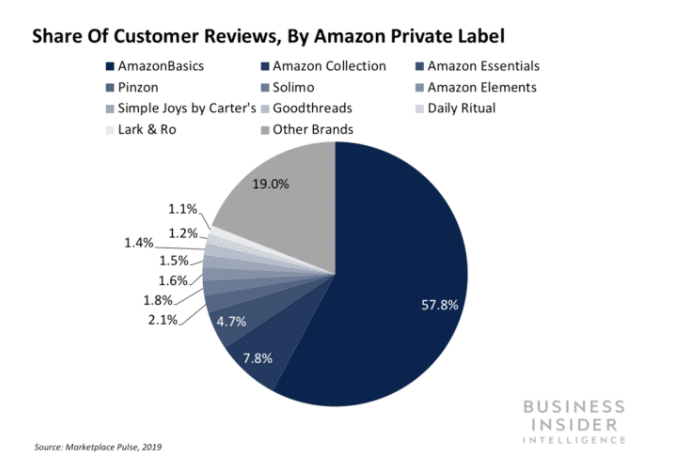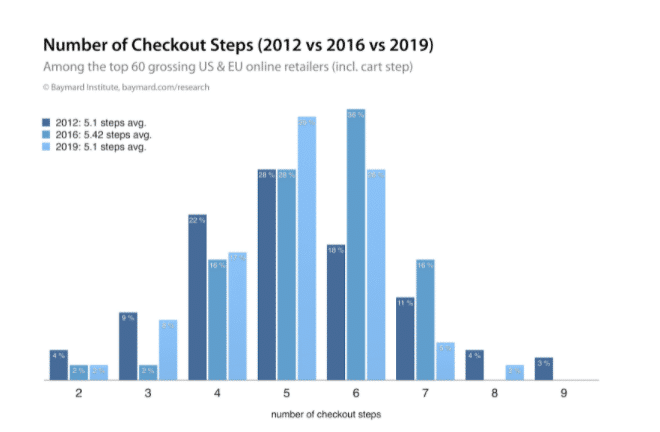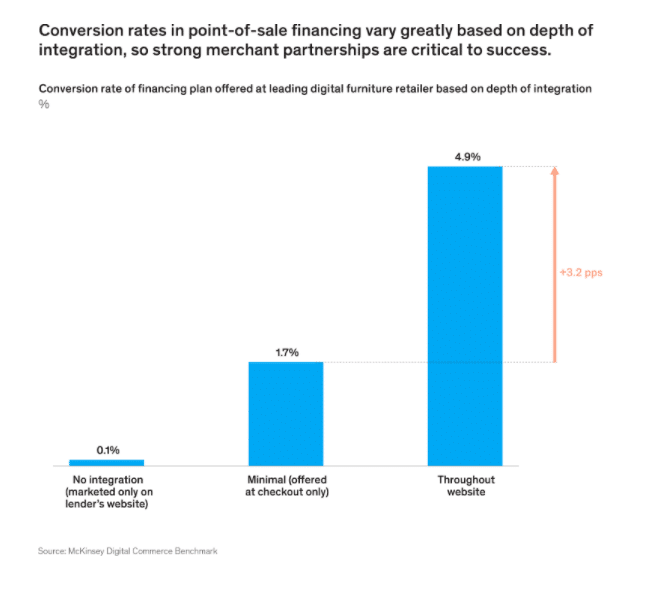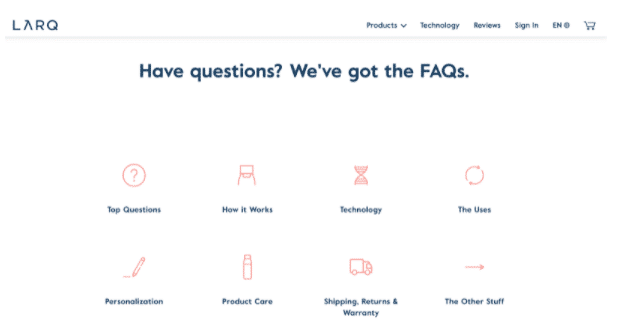11 best ways for your online store to compete with Amazon in 2023
Unless you’ve been living under a rock at the North Pole, you already know how ever-present Amazon is.
The company has ecommerce operations in 13 major markets, with Prime deliveries available in nine of them. Such vast market penetration reflects in the sales figures. In 2020, Amazon made $215.9 billion in net product retail sales.
That is impressive, but also disheartening for other online retailers.
Is it even possible to compete with Amazon at this point? Or is it better to become part of their operations and join the ranks of marketplace sellers? The answers are: Yes and not necessarily.
Many ecommerce brands are doing just fine on their own (as we’ll show in this post) by being tactical with their brand positioning, marketing, and customer experience. You too can become one of them!

Amazon dominates ecommerce marketshare
Amazon controls 47% of the US ecommerce market. Another 53% is up for grabs, which is good news.
Since the early 2000s, Amazon has adopted the strategy of building a digital platform. A platform business model means Amazon does not own the means of production but facilitates the means of connection. Rather than manufacturing products or partnering with suppliers, Amazon merely created the digital premises where others could sell goods to the buyers. They added private label products, such as Amazon Essentials, a decade later.
The platform strategy in ecommerce (and beyond it) enabled Amazon to scale fast by tapping into the network effect its participants created without taking on extra inventory.
Fast-forward to 2019, Amazon now sells over:
- 135 private label brands
- 330+ Amazon exclusive brands

Source: Business Insider
If you look at this Amazon timeline, you see the company has a consistent upward trajectory. Their ecommerce sales are growing stronger YoY thanks to a winning combo of fast and free shipping, one-click purchase process, and jumbo-sized product catalog. The company set several “best practices” and benchmarks in the ecommerce space.
Despite that, Amazon also frequently faces backlash. From lack of sustainability practices to poor worker safety, the calls for boycotting Amazon are becoming louder among ethically-minded consumers.
So, where does this leave other online sellers?
Amazon may be a tough competitor, but it’s not invincible. Shifting consumer perceptions also present a great opportunity for smaller brands to find a chink in Amazon’s armor.
11 do’s and don’ts for competing with Amazon
Despite Amazon’s immense reach, many brands have chosen to part ways with the platform. Ikea, Nike, Birkenstock, and PopSockets all pulled their products from the platform. Why?
Because most grew tired of the company’s overarching control over pricing and brand positioning and, at the same time, lack of control over resellers and counterfeit goods.
Even if your ecommerce operations are far from Nike’s or Ikea’s size, you too can be successful without Amazon. Here’s how.
1. Do experiment with unique shipping options
Over 147 million US shoppers have an Amazon Prime account, which is synonymous with uber-fast delivery.
If you’re a smaller brand with a limited logistics infrastructure, you probably can’t offer the same speed. But that doesn’t mean you can’t compete on shipping.
Amazon lacks physical storefronts for same-day pickups. If you have a physical store or stores, this can be your competitive edge. BOPIS (buy online pick up in-store) has become a go-to option for customers during the pandemic. Many say they plan to keep this habit in a post-pandemic world.
What’s more, 65% of consumers also check the free shipping threshold before proceeding to checkout. Offering BOPIS or curbside pickups is a great way to provide free, fast delivery without absorbing some of the shipping costs.
The benefits of BOPIS for retailers include:
- Lower logistics and handling costs
- Better inventory management
- More opportunities for upselling.
If your operations are online-only, you can still excel in shipping. Analyze different 3PL providers and compare the shipping costs and solutions for different categories.
Alternative profit-saving, yet customer delighting shipping strategies include:
- Live shipping rates from different carriers
- Flat rate or table rate shipping
- Mixed options such as free longer shipping and paid expedited shipping
Determine which shipping options your customers go for the most often and optimize your strategy accordingly.
2. Don’t have unclear shipping options
A staggering 77% of shoppers abandoned an online purchase because they were unsatisfied with available shipping options.
This happens for several reasons:
- High prices: Almost three-quarters of shoppers may not follow through with a purchase if there’s a delivery charge. Such price-sensitive consumers often prefer Amazon for its low free-shipping threshold.
- Long delivery times: Not only do consumers want free delivery, but they also want a fast one. The average willingness to wait for a package is 4.5 days.
- Lack of updates: Consumers wish to be proactively informed on their order status and receive updates on the shipment progress through different delivery stages. Lack of tracking can be a deal-breaker for most.
Per the 2020 Voxware Holiday Survey, over 73% will do more business with retailers who met their fulfillment expectations during the busy holiday season. At the same time, 53% will never buy again from a retailer who mishandled their order.
The takeaway from the data is this: be forthcoming with your shipping policies.
Provide clear guidance on shipping options, costs, and timeline. Add a notification if you are currently experiencing delays. During busy seasons, entice earlier purchases with free shipping coupons to reduce the pressure on your warehouse teams and last-mile delivery providers.
3. Do sell products that are different from what’s on Amazon
Every product vertical seems to be covered by Amazon. But its reach isn’t comprehensive.
Here are products that you cannot sell on Amazon:
- Alcoholic beverages and spirits
- Artwork including sculptures, textiles and other artwork without a named artist
- Any type of CBD products
- Additive jewelry made from precious metals without stamping
- Any type of subscription products
Several of these niches including, CBD, craft alcohols, and ecommerce subscriptions, are highly lucrative.
The subscription ecommerce market increased by 100% over the last five years with top retailers making over $2.6 billion from recurring orders. The subscription business model works particularly well for DTC ecommerce brands who want to offset high customer acquisition costs by increasing customer lifetime value.
Craft distilling is another promising business niche with solid opportunities for growth. Craft beers in the US already account for 24% of the market share and $94 billion annually. A fair share of these sales happens online, as Beer Cartel noted. After expanding to online, the niche seller recorded a 300% increase in sales volume YoY.
Evaluate different product ideas for viability. Look into emerging and less competitive niches and product categories and fill in the gaps.
4. Don’t have a complicated checkout process
Hassle-free, one-click checkout is another signature staple of Amazon. To the point where customers complain that it’s way too easy to order a product accidentally.
But to compete with Amazon in this category, you don’t need to make ordering from you too difficult. You have to make it just right. Here’s how:
-
- Provide shipping costs upfront. As we discussed earlier, high shipping costs or long delivery times can be a deal-breaker for many.
- Don’t force users to create an account immediately: 24% will abandon their cart if they are asked to register first. Provide a guest checkout option, then follow-up with a transactional email, prompting them to complete account registration.
- Trim your checkout flow. Remove unnecessary forms and flow steps to reduce friction. The most UX-friendly ecommerce websites have 5.1 steps.

Source: Baymard
4. Support different payment processors. Provide a selection of payment methods to pick from — credit/debit cards, PayPal, ApplePay, GooglePay — for better convenience.
5. Experiment with post-purchase payments. Lending at point-of-sale for low-ticket items (purchases under $500) is growing at a 40%-50% rate in the US. Offering this option, which isn’t available on Amazon, can help boost checkout conversions and AOVs.

Source: McKinsey
5. Do have an excellent return policy
For 32% of consumers, a good returns policy is a strong driver to buy more online. Most expect retailers to:
- Provide free returns and exchanges
- Accept online item returns in store
- Issue fast refunds
Amazon excels in all of the above. So how can you compete? Take a page from other successful ecommerce companies.
- Offer faster refunds and exchanges to repeat buyers. Instead of asking the customer to wait until their package hits your warehouse, refund them when the return label is scanned by your shipping provider. That’s what Zappos does for their VIP customers with a good track record of purchases.
- For bulkier items, split the shipping costs with the customer. Shipping large-sized products such as furniture or sports equipment can put a financial strain on your operations. But not offering returns can deter some shoppers. Burrow — an online furniture retailer — tackled this issue by asking the customers to pay 10% of the item price if the packaging is intact and 20% if they already opened the product. The max cap is set at $250 and they provide exchanges for free.
- Upsell a warranty that covers free returns and exchanges. A warranty can serve a dual purpose — signal higher product quality to the consumers and cover you against excessive free returns. That’s what Black Diamond does. The sports gear manufacturer offers up to a 3-year warranty for most of its products (purchases via their store versus resellers).
6. Don’t forget about selling on other marketplaces
Amazon may be on top, but it’s not the only type of digital marketplace you can tap into to reach wider audiences.
Strong Amazon alternatives for online sellers include:
-
- Google Shopping: In Q4 2019, Google Shopping clicks grew 34% for desktop searchers and 111% on mobile phones. The momentum only picked up speed in 2023. Unlike Amazon, which fully controls all the analytics data around product searchers and interactions, Google Shopping provides you with all the intel on customer clicks and search terms, plus it helps drive traffic to your store, rather than the marketplace as a whole.
- Target Plus: A newer entrant to the platform business, Target accepts third-party sellers to their marketplace as of February 2019. Listing your goods on this platform can help diversify your reach and build brand awareness among new customer demographics.
- eBay: The longest in the game, eBay is often seen as an “entry-way” for new retailers and hobby sellers to make money online. The platform has a wide-spanning reach, but not every product category sells well here. Consider eBay as testing grounds for newer products or a supplementary channel to your ecommerce website.
7. Do build a brand and a loyal fan base.
Amazon provides access to products, but it fails to connect with buyers on an emotional level. Nor does the platform provide sufficient seller tools for brand marketing. This is a shortcoming you could capitalize on.
Consumers are loyal to brands they admire. In fact, 60% use emotional language when describing their connection to favorite brands. Specifically, qualities such as “trustworthiness,” “integrity,” and “honesty” are the factors that help consumers develop a strong affinity for certain brands. Hence, focus on forging those through your online presence.
Double-up on your content marketing strategy and lean more into storytelling.
Explain what your brand stands for — name your mission, share your brand values and backstory. Build a stronger narrative around your brand to improve brand recall, boost consideration, and ultimately usage.
Here are several ecommerce brand-building techniques worth trying:
- Sell the idea behind your product: Do people upgrade their iPhones because the newer model offers cutting-edge functionality? Not necessarily as many of Apple’s competitors have equally great hardware. But many of the brand’s fans are enamored with the ideas behind Apple’s products — innovation, creativity, status. Place your products in a context too. Showcase the experience of owning and using your product and the benefits that come with it.
- Enlist brand ambassadors. A good brand ambassador and evangelist isn’t necessarily a celebrity. It can be a power user, loyal customer, or even someone from your team. In fact, 44% of Gen Z consumers want to submit ideas for new product designs and otherwise engage with their favorite brands. The idea is to find an inspiring person that appeals to your target audiences and projects the same values your brand supports. Skullcandy, for example, recently partnered with one of the youngest ever skiing champs to promote a new collection of headphones — sleek, mini, but mighty.

Source: Skullcandy
- Share your brand origins. Local and sustainable brands strike a strong chord with Millennial and Gen Z consumers. Over the past year, 61% of retail consumers started making “greener,” more sustainable, and ethical purchases. Many are retaining the habit in 2023. Showing that your brand cares about the following factors, too, can be game-changing for marketing.
By investing in a strong brand (outside of Amazon), you can sway the consumer’s decision to pick your products despite the lack of next-day shipping and other Amazon-ish perks.
8. Don’t sacrifice your margins
Sellers on Amazon have to sacrifice a good share of their profit margins for using the platform. In fact, Amazon product referral and FBA fees in the US are due to increase on June 1, 2021. Given that most smaller e-tailers already operate on paper-thin margins, relying on this platform may not be the optimal choice.
So how do you increase the profit margin of your ecommerce operations? Try the following:
- Automate low-value, manual processes to recoup some operating costs
- Focus on increasing monthly return on sales, rather than per order profits
- Increase the average order value through bundles, upsells, and subscriptions
- Invest more in customer retention over customer acquisition
- Optimize your wholesaler pricing to retain more profits
- Rethink your promotional strategy and focus less on dollar-value discounts
- Improve the checkout experience to reduce cart abandonment rates
Finally, reconsider your pricing strategy. Can your customers tolerate higher pricing? Can you sway their decisions by focusing more on perceived product value, rather than the dollar value of production? Brainstorm!
9. Do work in niche marketplaces
Claiming a distinctive ecommerce niche can help smaller online retailers achieve profitability faster. A sharper focus on one market translates to deeper audience knowledge, lower advertising costs, easier inventory management, and fast-tracked leadership in a certain category.
Apart from going niche in your brand positioning, you should also do so for alternative distribution channels. eBay, Google Shopping, and Amazon may have a high volume of monthly visitors. But increased traffic numbers do not always translate to higher conversions.
Thus, if you plan to sell your products through other channels, consider a niche marketplace. Here are some options:
-
- Etsy — best for handmade products, art, clothes, and vintage items.
- Newegg — a popular marketplace for consumer electronics.
- Zibbet — specializes in art, home decor, and custom designs.
- Thrive Market — accepts manufacturers of organic skincare and beauty products.
- BackMarket — a growing marketplace of refurbished electronics.
Alternatively, approach other multi-brand online retailers in your market and discuss the terms of cooperation directly.
10. Don’t compete for the lowest prices
Selling on Amazon means that you are constantly competing on price against dozens of sellers and private-label goods listed on the platform. That’s a race you can never win unless you drop your prices bottom-low.
So how to compete with Amazon prices? Don’t play their game. Instead of engaging in multi-dimensional price wars with the giant, select another competitive target — customer experience (CX).
CX has already overtaken price and product as the biggest brand differentiator. Not only are consumers more eager to buy from online brands offering a seamless online ride, but they will also brag about their experience online. Up to 95% of customers who ranked a brand’s CX as “very good” are likely to recommend it to their personal network versus 15% who ranked the organization’s CX as “very poor.”
From website navigation and content presentation to checkout, shipping, and customer support, you need to offer consistently high levels of convenience, security, and personalization.
11. Do make sure you have great customer service
For 42% of shoppers, fast and reliable service is the most important driver for shopping online. This extends both to your website performance, shipping operations, and customer support.
Reaching Amazon support by phone can be notoriously long. But they are doing a great job at minimizing the volume of calls and live chats with extensive self-service features. So should you.
Make sure that you address common FAQs around payments, shipping, returns, warranties and product features on your website. Take a cue from LARQ. Their support page covers a wide range of customer questions.

Source: LARQ
Other components of a great customer service experience include:
- Clear support hours: State when your agents are available via phone/live chat and how soon the customer will receive an email reply.
- Personalized approach. Connect your ticketing system with a CRM to instantly pull up relevant customer information such as their name, order history, loyalty status, etc.
- Up-to-date information. Equip your CS team with the real-time data they need to help consumers, such as product availability per location, estimated shipping times, and order status. One way to do so is by integrating your inventory management system with shipping providers.
- Chatbots. Chatbots are great for providing first-line support and guiding users through self-help resources. Over 34% of online retail consumers feel comfortable with using AI chatbots instead of human representatives. Such automation can reduce the pressure on your team and help with prioritizing tickets.
Ultimately, ensure that your support team is adequately staffed, trained, and motivated to provide the best services levels.
Wrapping up
Amazon built a strong value proposition for attracting brands of all sizes to their platform. Access to huge audiences, managed fulfillment, streamlined order management sweeten the deal of selling on Amazon.
But it’s not the only path to being successful in ecommerce.
You can compete with the Amazon Marketplace and win the race if you focus on optimizing your ecommerce website and online presence.
Don’t copy the practices. Do better in the department where Amazon lags — relationship building with individual consumers.
Running your own website means unconstrained access to behavioral analytics and sales data. Use the insights you collect to optimize your on-site experience, improve shipping and logistics capabilities, personalize content and product recommendations and inspire consumers to bond with your brand.